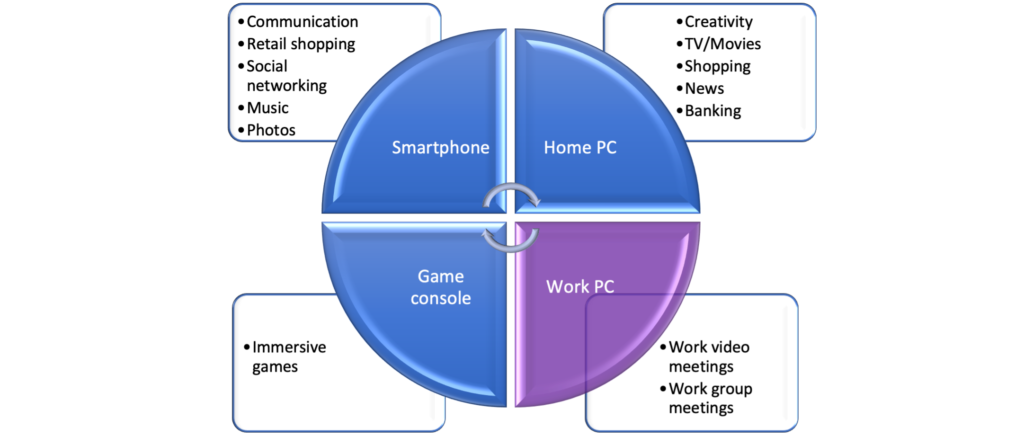There has been a sea change in which connected devices people use as well as how they use them. This TUP Highlights report details the trends in device ownership, the shifts between technology ecosystems, and market penetration levels. It spells out the major activities for each type of device, and how usage has changed. Furthermore, it details how many employees use personal devices for remote work.
Smartphone penetration by socioeconomic groups
How different are advantaged from disadvantaged Americans in whether or not they use a smartphone? How much has this changed since before the pandemic? How do historically socioeconomically advantaged groups such as high-income or college graduates compare to disadvantaged groups such as single parents, low-income, less-educated, elderly, or people of color? This TUP analysis reports on the penetration of smartphones within each socioeconomic group.
Mobile Phones TUP Lens
Smartphones have rapidly, although not completely, replaced feature phones. Smartphone users have expanded their range of activities with new uses while also increasingly migrating activities from computers and tablets. This TUP Highlights Report profiles smartphones – their market penetration, user demographic profile, regular activities, usage profile, key competitors, and purchase plans.
This TUP Highlights report includes the following sections: penetration of smartphones versus feature phones, smartphone brand share, top activities for smartphones, smartphone carrier share, smartphone usage profile, trends in technology ecosystems, major activities for a market segment, and the profile of smartphone users.
Samsung user profile [MetaFAQs]
Samsung’s share of the installed base varies by country and within user age groups. This MetaFAQs reports on Samsung’s share by country, age group, and employment status.
Top activities across platforms [TUPdate]
There are certain activities that transcend form factors, such that they are popular with every type. This TUPdate identifies regular activities that are high on the list for smartphones, PCs, and tablets, those popular on two of the three, or unique to one type.
Top smartphone activities [TUPdate]
What we do defines us more than what we are carrying. This MetaFAQs profiles smartphone users by their regular activities – those which are most popular worldwide and those unique to the country. It further splits out activities into four groups: younger and older adults that are employed versus those who are not employed outside the home.
Smartphone brand share by country [MetaFAQs]
The market share of actively used smartphones varies substantially by country. Apple leads where Samsung or Huawei don’t, and vice versa. This MetaFAQs reports on the share of active installed based on online adults in the US, Germany, UK, Japan, and China’s most-educated adults.
Activities for PCs versus smartphones
Dan Ness, Principal Analyst, MetaFacts, September 13, 2021
Which device gets chosen for which activities?

iPhone and Android smartphone purchase plans [TUPdate]
Fifty percent more online Americans plan to buy an iPhone than an Android smartphone.
Shifts in Apple and Windows penetration among Americans [MetaFAQs]
Apple’s PC/Mac penetration has grown while Windows has shrunk. Globally, iPhone penetration has grown as Androids have subsided – both have been stable among online Americans. Globally, iPad penetration has withdrawn as have non-Apple tablets.

